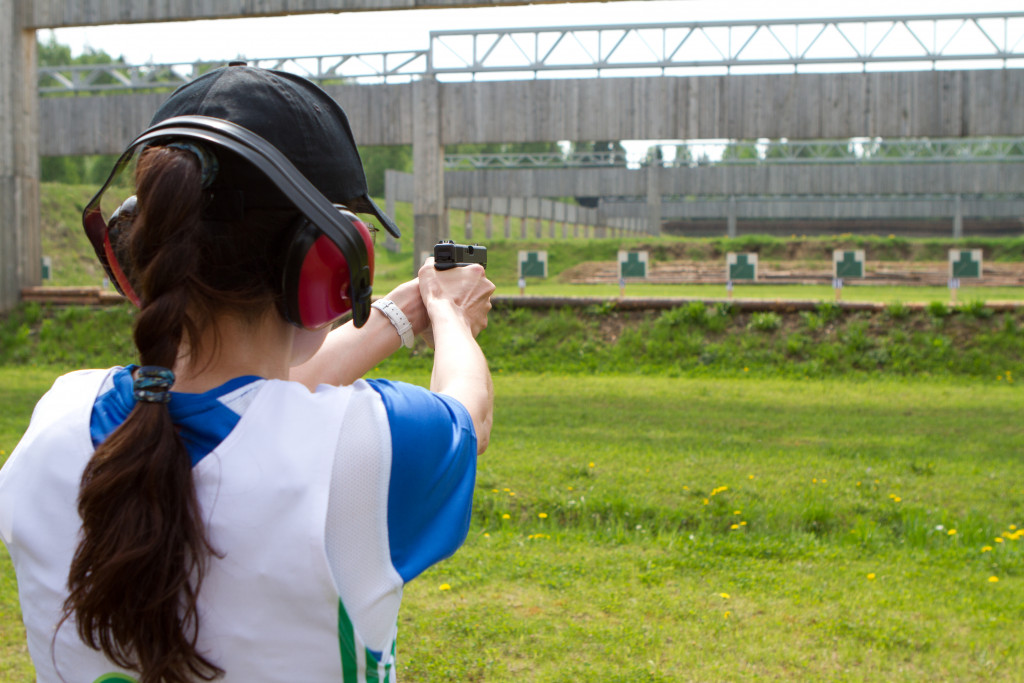If you own a plot of land open for development, you might want to consider building your firing range for a business. Having prior knowledge of ammunition and shooting is another advantage you could maximize. Besides that, there are other things that you need to prepare if you are putting up a firing range.
Compliance with Laws
Businesses belonging to the firearms sector are regulated by the Alcohol, Tobacco, Firearms and Explosives Bureau (ATF). From the conception stage until your firing range is up and running, you must frequently coordinate matters with legal implications with them. On your end, make sure to find out any other local agencies and heed firearm regulations unique in your municipality or county.
Guns you are putting up for rent for guests require licenses. These are issued by the Federal Firearms Licensing (FLL) after carefully screening its manufacture, purchase, and import information.
The Range Layout
Gunshots could get as loud as 169 decibels, twice as loud as the noise from a rock concert, and can be heard as far as miles away from the source. That said, it is crucial to set up a range as far from residential and commercial areas, especially schools, as possible. Still, noise levels can be modulated using soundproofing technology; only this is an additional investment you have to prepare for.
Outdoor Ranges
Ranges primarily are built outdoors. A vast land plot allows versatility in target placement to cater to different levels of shooting abilities. You can even go as far as creating shooting stations, each with a unique scenario that the shooter has to unravel and solve to end. Overall, nothing beats the lifelike experience outdoor ranges offer to clients. Besides, they are generally cheaper to build than indoor ones.
Proceeding with an outdoor range, you may still need to put up sheds to provide protection from the sunlight and serve as a neutral area (as opposed to target zones). Either have this built from scratch by a carpenter or have it custom-made by a contractor. While on the site, clients should be required to wear appropriate clothing and protective gear and must be prohibited from eating.
You also have to know the safety implications aside from noise pollution and accidental shooting that come with operating a firing range outdoors. Gun powder contains lead which is poisonous when inhaled or ingested. All firing range establishments must properly dispose of lead and keep a record of every exhausted bullet.
Lead is also not soluble in water, so setting up range near a natural water form is not recommended. Still, if you go on with building a firing range near a body of water, you are required to comply with the provisions of the Clean Water Act and those of the Resource Conservation and Recovery Act. People can sue you for violating any part of these laws.
Indoor Range

On the other hand, you can also construct an indoor range. The layout of an indoor firing range addresses most of the potential problems of outdoor ranges, but it requires doling out a significant amount of money. Still, bringing your range indoors is a wise option if you want to offer a more exclusive experience to your clients and if you want to muffle noise to its minimum levels.
An indoor range typically comes with a specialized HVAC system that can filter out particulate lead from gun powder, therefore, protecting your clients’ health while providing them with ample ventilation. To further standardize the experience, you should install lighting that improves target visibility while not producing excessive glare, which could strain your clients’ eyes. If your range offers training courses for police trainees, your lighting should be adjustable to a 0-10V dim.
The Elements That Complete a Range
Whether your range is an outdoor or an indoor type, it should contain the following components:
- Line seat and platform. The firing line platform should provide a good line of sight of the targets to the shooter. You should also provide a seat or bench for them to rest on.
- Backstop berm. Also called a bullet box, a backstop berm is a box that is open on top and the front. It is filled with sand maintained at a slope that reaches at least eight feet and is flat at the top. This keeps bullets from going out of the range’s bounds.
- Bullet trap. The bullet trap prevents stray shots and also helps collect spent bullets and bullet dust. Some bullet traps are equipped with negative pressure that sucks in dust from the air.
The market for self-defense, be it in the form of martial arts or with the use of ammunition, is ever-growing. Gun laws remain a debatable topic in various states, but the general interest in shooting both as a hobby and a contingency for emergencies is undeniable. If you are an investor looking into new business ventures, putting up a firing range may just be a viable option.

